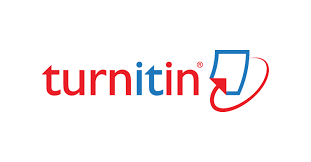FICTIONAL GAY CHARACTERS AS SEEN IN US TV SERIES ‘ARROW’ SEASON 1 – SEASON 8
DOI:
https://doi.org/10.32493/efn.v6i1.25654Keywords:
Arrow, fictional gay characters, US TV Series,Abstract
The existence of LGBT characters in US TV Series had developed massively these days. This research focused on fictional gay characters in US TV Series entitled ‘Arrow’ from Season 1 until Season 8 – Finale, which is from 2012 until the early 2020. The theory of gender and sex, LGBTQ and TV representation, as well as heteronormativity have been used to analyze gay characters through their role, their emotions, and their conversation in the movie. Qualitative method with content analysis has been used to describe about all the findings. This qualitative content analysis is used as an analytical tool to explore the characteristics and the texts as the visual elements of the scene dialogues. The result showed that there are characteristics of LGBTQ characters: gendered stereotype, victimization, villain, sexual/no sexual depiction, and equality rights. Gay characters in Arrow fulfill three out of five characteristics. Those characteristics including villain, no sexual depiction, and equality rights.
References
Acker, Drew. (1992). Feminism in Theory: The Practice of Abstraction. London: Prentice Hall.
Benshoff, Harry & Niall Griffin. (2006). Queer Images: A History of Gay and Lesbian Film in America. New York: Rowman & Littlefield Pub.
Butler, Judith. (1999). Gender Trouble: Feminism and the Subversion of Identity – second edition. New York: Prentice Hall.
Dhaenens, B. Ruby. (2013). New Queer Cinema: The Director’s Cut. Durham, London: Duke University Press.
Gentile, Merck & Elizabeth Wright, eds. (1998). Coming out of Feminism? Oxford: Blackwell.
Hite, R. Munt. (2017). Lesbian and Gay Studies: A Critical Introduction. London: Cassell. xxvii + 388 pp.
Kurtz, Jenkins. (1999). The New Lesbian Studies: Into the Twenty-first Century. New York: Feminist. xix + 295 pp.
Lovaas & Jenkins, eds. (2007). Straight Studies Modified: Lesbian Interventions in the Academy. London: Cassell. x + 244 pp.
Parker, Kandice & Melanie Morrison. (2019). Humanizing Lesbian Characters on Television: Exploring Their Characterization and Interpersonal Relationship. Journal of Lesbian Studies. October 2019. DOI: 10.1080/10894160.2019.1678935.
Richardson, Niall & Jackson Nash. (2019). Lesbian, Gay, Bisexual, Transgender, and Queer (LGBTQ) Cinema. Journal of Lesbian Studies. January 2020. DOI: 10.1093/OBO/9780199791286-0033.
Seif, Ray. (2017). The Media Representation of Fictional Gay and Lesbian Characters on Television: A Qualitative Analysis of U.S. TV-series Regarding Heteronormativity. School of Education and Communication: Jonkoping University.
Soto-Sanfiel, Maria & Goran Madzrevic. (2018). Positive Representation of Gay Characters in Movies for Reducing Homophobia. Journal of Sexuality and Culture. February 2018. DOI: 10.1007/s12119-018-9502-x.
Subero, Wilchins. (2004). Queer Masculinities in Latin American Cinema: Male Bodies and Narrative Representations. New York, London: I.B. Tauris.
Tropiano, Fin. (2011). Queer Popular Culture: Literature, Media, Film, and Television. New York: Palgrave MacMillan.





